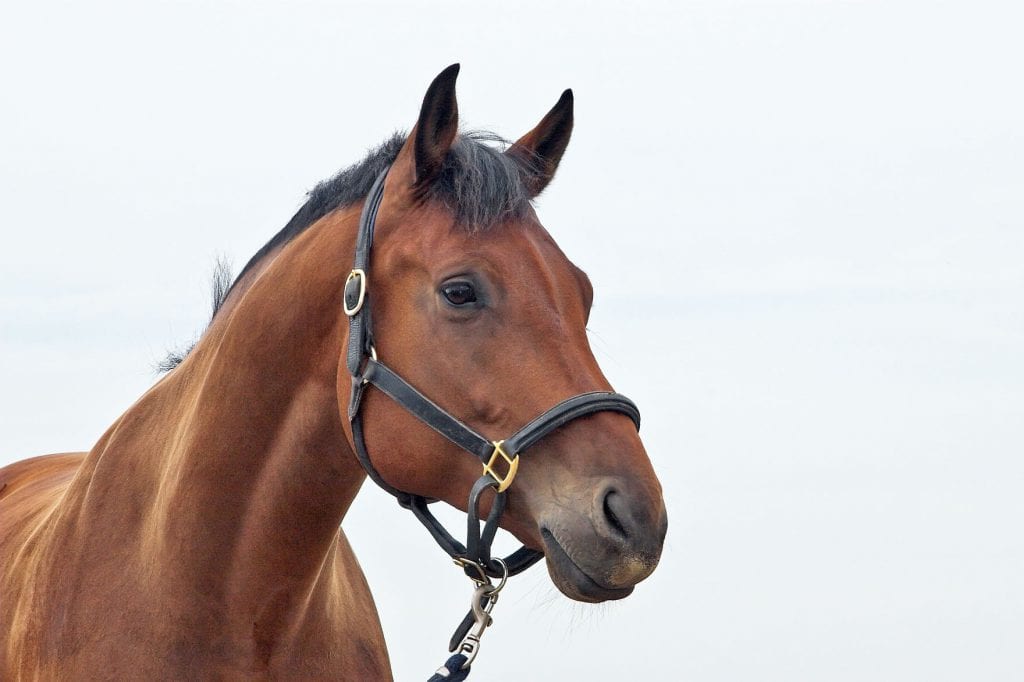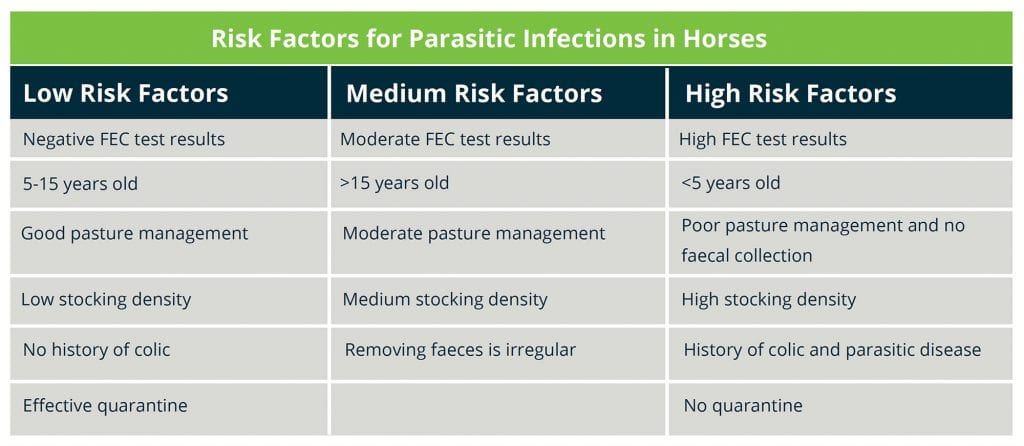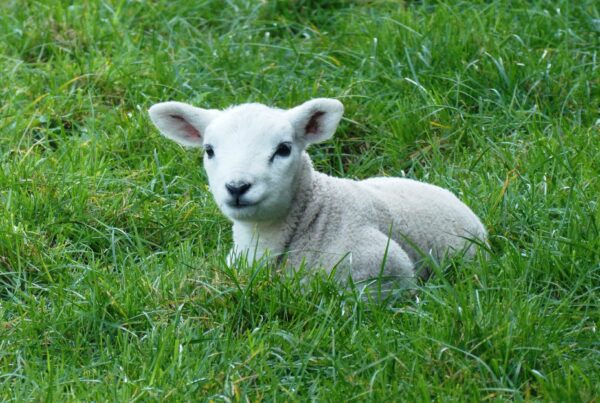
Article by Padraig Harris, MVB
Animal Health Centre, Taghmon, Co. Wexford
In this article, Vet Padraig looks at the main factors affecting worming choice and the three major players in equine parasites; red worms, tapeworms and roundworms.
1. Horse’s Age
Foals and horses <5 years and >15 years of age are considered at higher risk from the effects of parasites and will require more targeted worming treatment.
All foals are born entirely free of worm burden; however, they will pick up roundworms from suckling and their environment. Dosing is neither required nor recommended before 2 months.
Juvenile horses are more susceptible to roundworm infection than older animals. Three worming treatments throughout the year will provide adequate parasite cover for horses with good nutrition and pastures that are not overstocked.
| Age | Recommendations |
|---|---|
| Foal | • Dose with Fenbendazole at 2 months + for roundworms • Dose with Moxidectin at weaning (Autumn) for redworms • Dose with Praziquantal for tapeworm once within the first year • No wormer needed before 2 months |
| Yearling – 4 years old | • Three worm doses per year • Dose with Ivermectin or Moxidectin in spring and autumn, each dose six months apart Dose for tapeworm with Praziquantal in spring |
| Mare | • Dose with Ivermectin 4-6 weeks before foaling to reduce worm burden in milk |
| All mature horses | • Dose for tapeworm with Praziquantal in spring Dose for encysted red worms with Moxidectin in Autumn/Winter • Use faecal egg count tests to identify high shedders |

2. Choosing a Wormer
Frequent treatments of random worming doses is unnecessary and may select for wormer resistance. Sending a faecal sample to your vet, UCD or The Irish Equine Centre is often cheaper than picking a basic wormer off the shelf.
Arm yourself with the facts; a faecal egg count will inform you of parasite burden and help to identify high shedders (>500epg). By identifying and targeting high shedders the overall level of parasite burden in a paddock can be lowered. Doing a faecal count before and after worming will also tell you if you have resistance to the active ingredient in that wormer.
3. Control Measures
Depending on wormers alone to reduce parasite burden is becoming increasingly untenable due to the rise of resistance to these products.
Simple control measures can be used to reduce the worm egg burden in your horse’s environment;
- Rotate paddocks where possible. Paddocks used for young stock every year will have higher worm egg counts
- Regular cleaning of stables and highly stocked pastures can severely reduce the egg burden in these environments. Remove faeces at least twice per week when temperatures are >10 degrees.
- Any new horse should be stabled or separated for 3 to 5 days after arrival and dosing. This will allow any eggs shed in dying populations of adult worms to be shed, avoiding contamination of your pasture with new or resistant parasites.
- Parasites love humidity – keep your stables dry!
- Co-grazing with sheep or cattle will reduce the parasite burden on your horse, however, avoid grazing horses and donkeys together, as horses are very susceptible to donkey lungworm.

Take Home Message
- Base your wormer choice on parasite burden, horse age and the season.
- Foals should not be wormed before 2 months old
- Clean pastures and stalls will significantly reduce worm exposure
- Rotate pastures of foals and young stock e.g. avoid turning weanlings onto paddocks that have been used by young stock every year, will have a high worm burden
- Avoid rotating wormers at random or worming at set intervals as this may increase resistance to wormers
- The use of FEC (between March – September) as part of your worming strategy has been shown to reduce the cost of de-worming overall compared to rote interval worming treatments.





